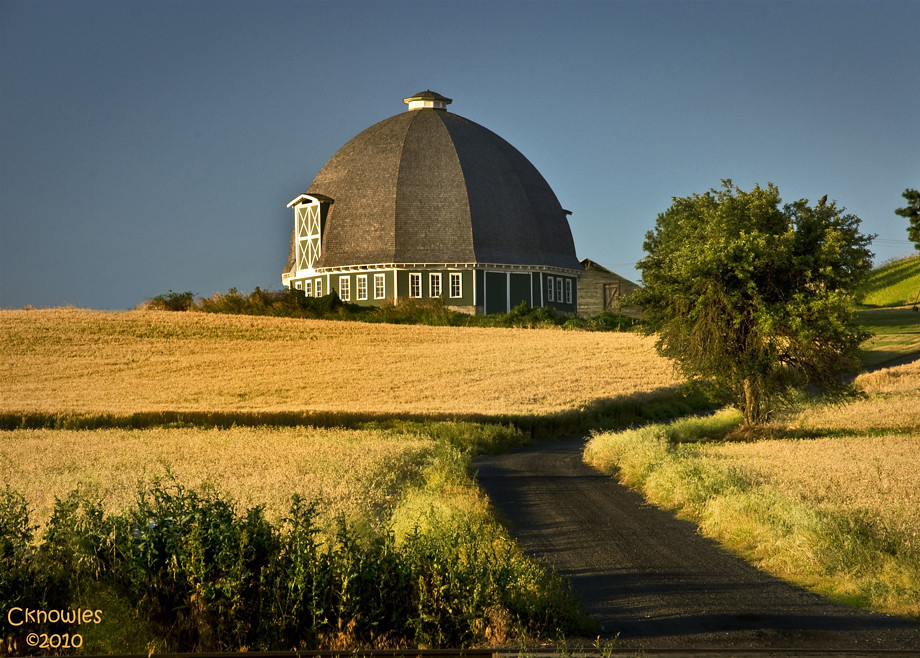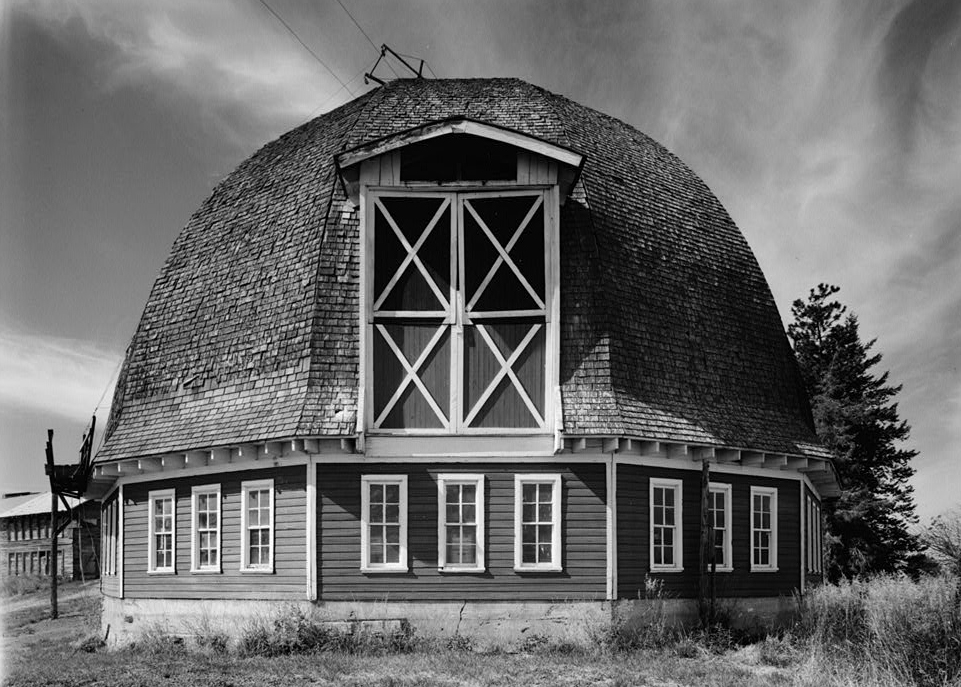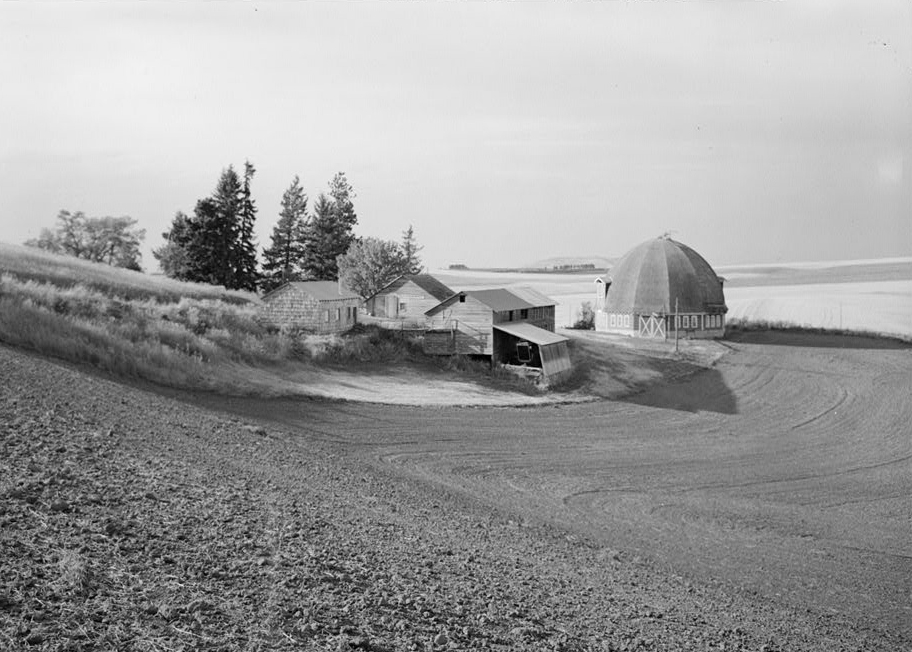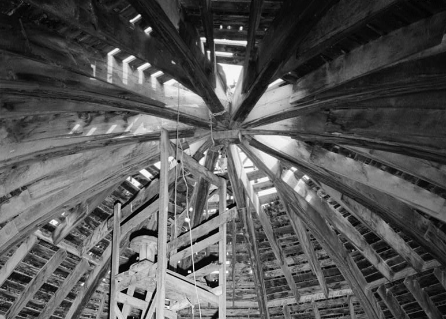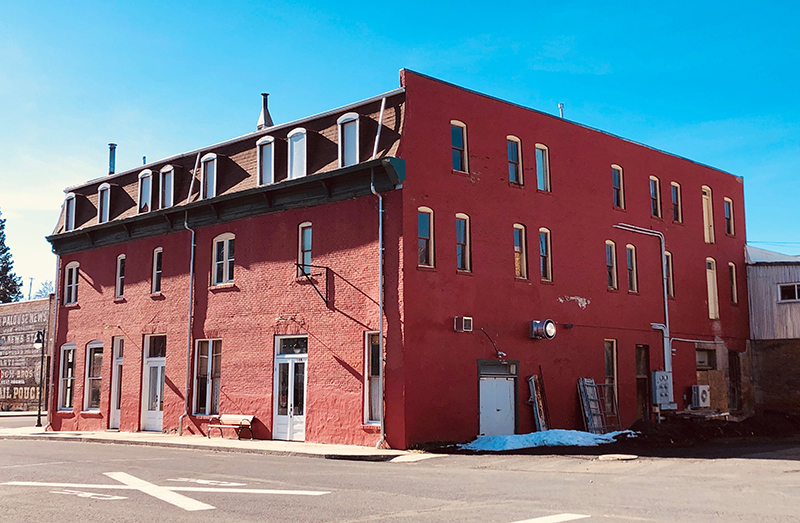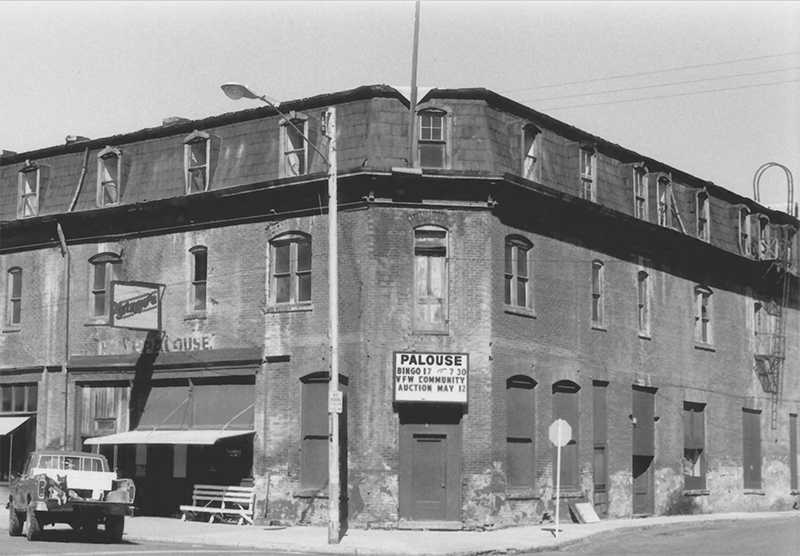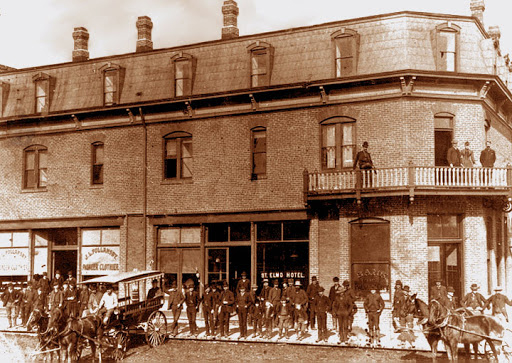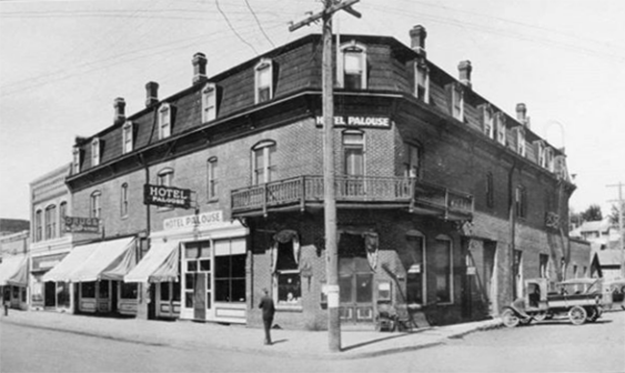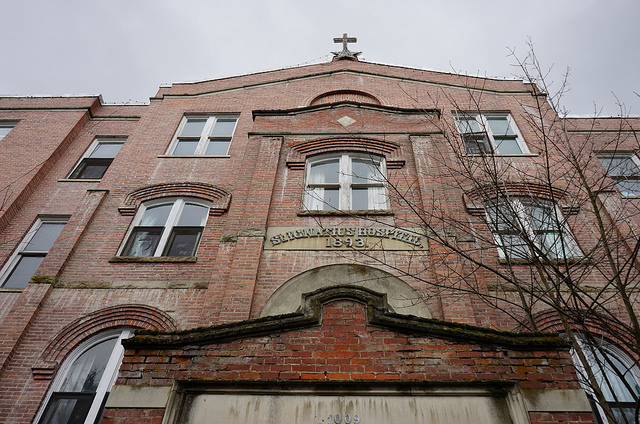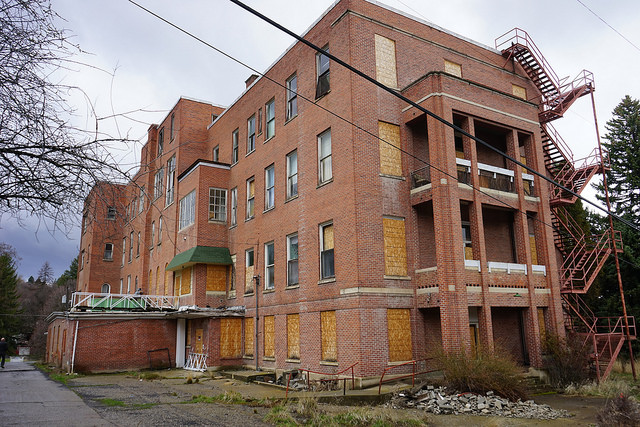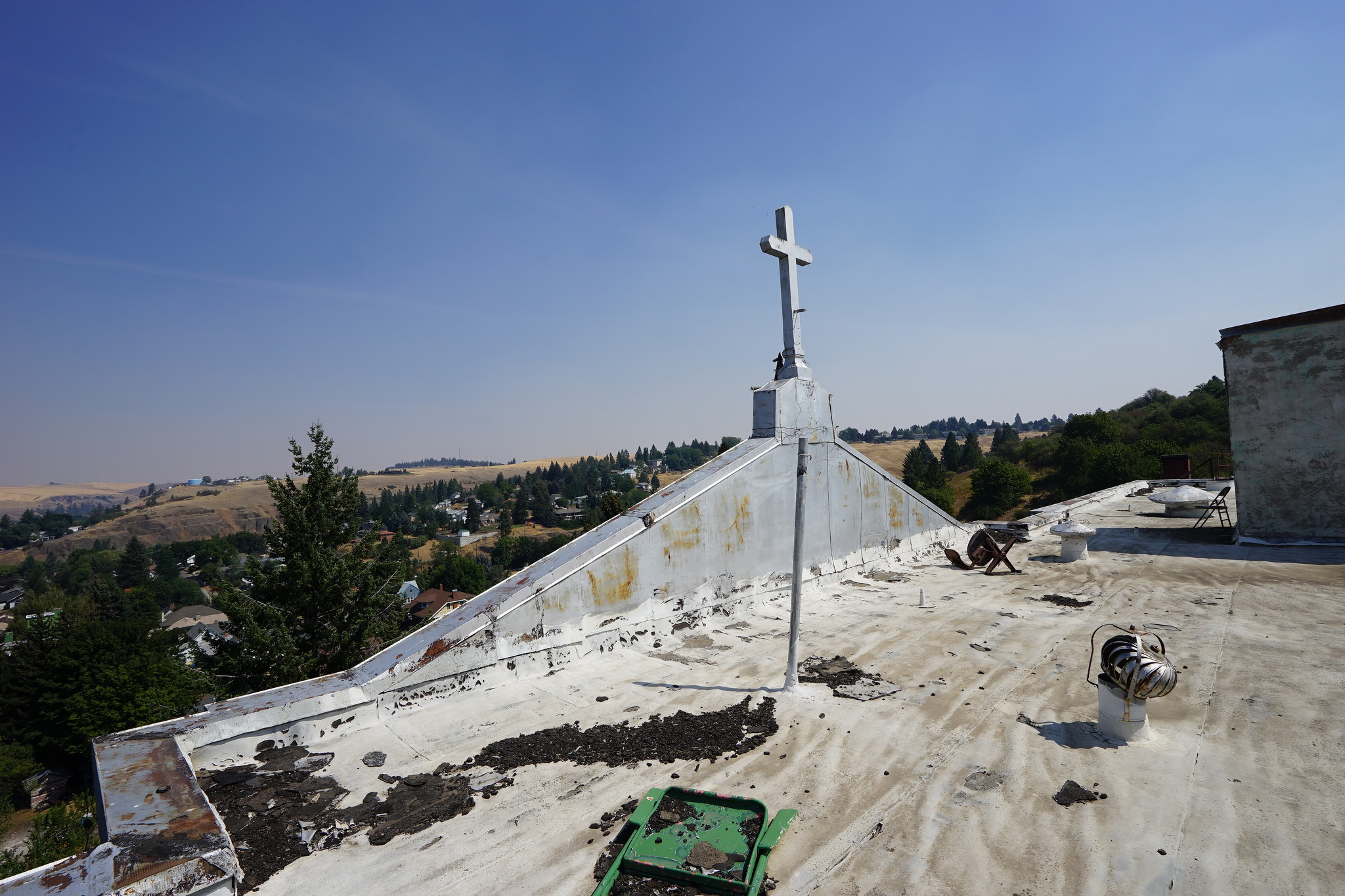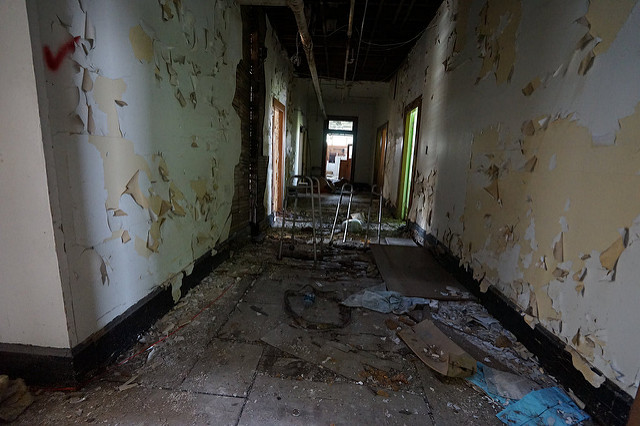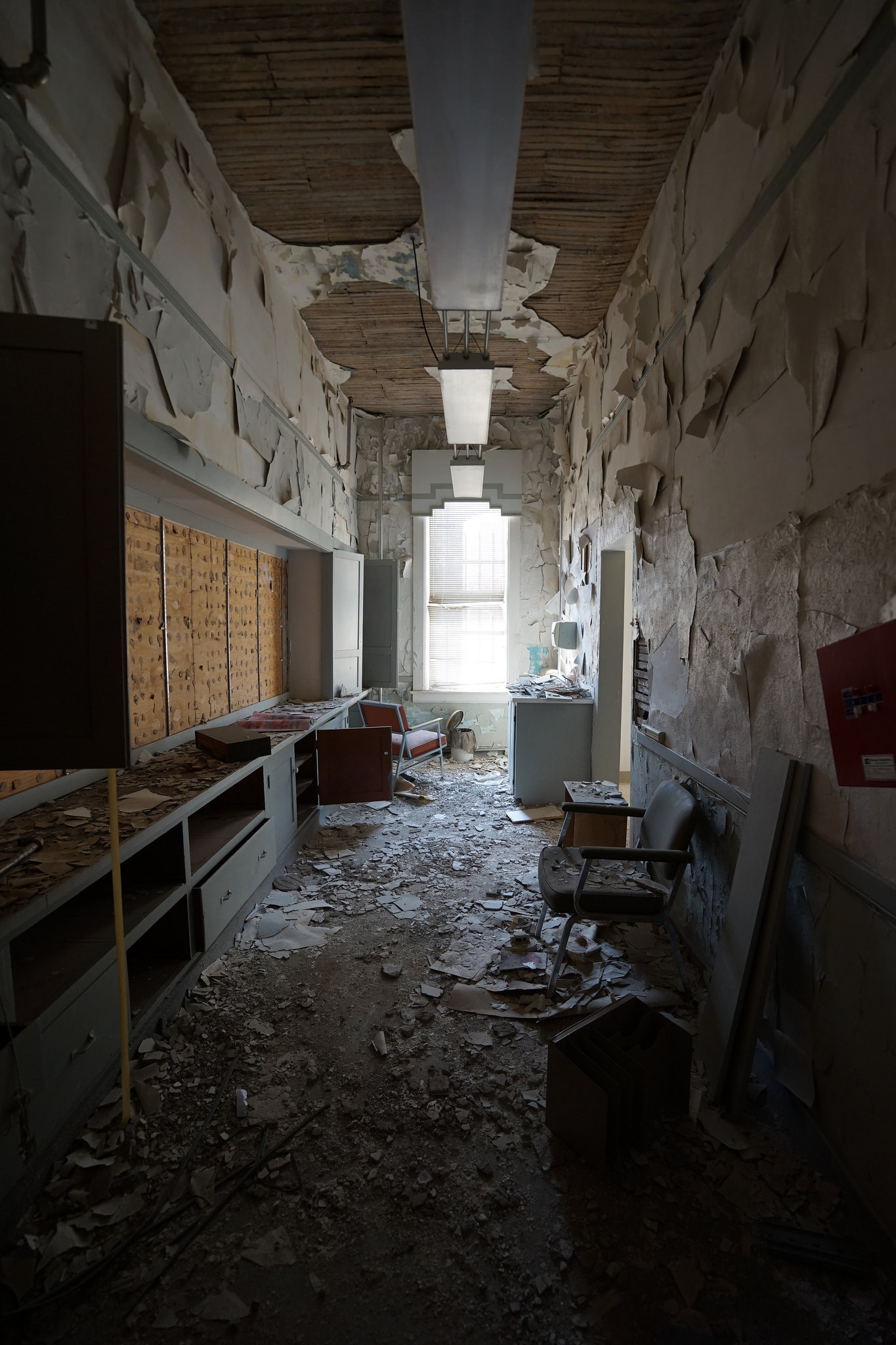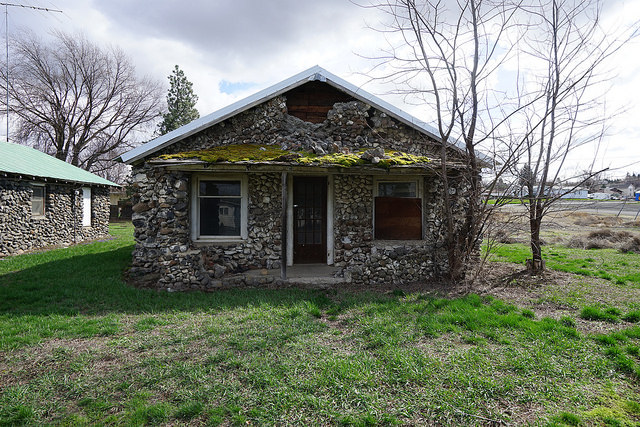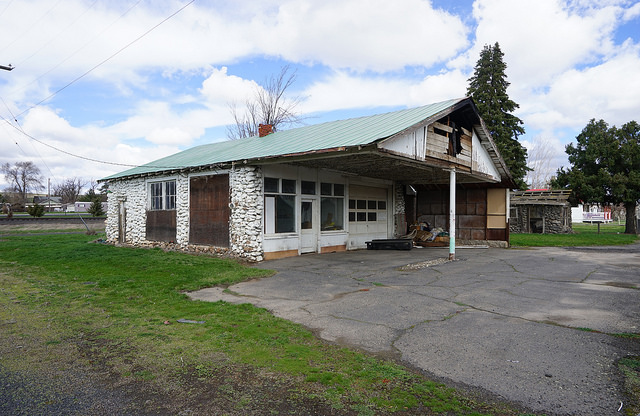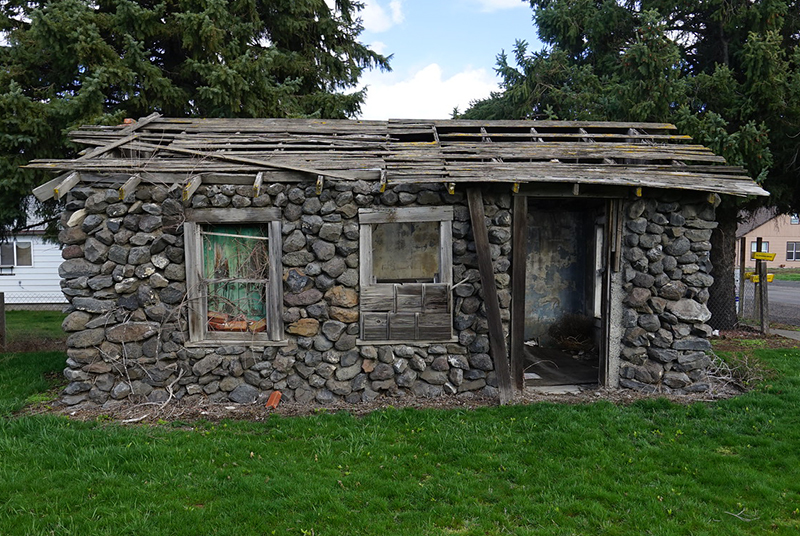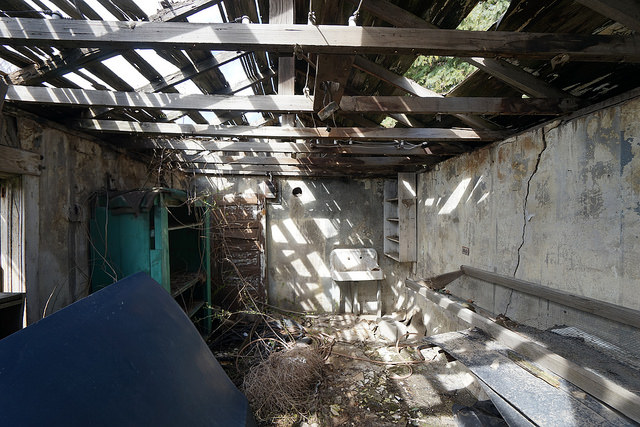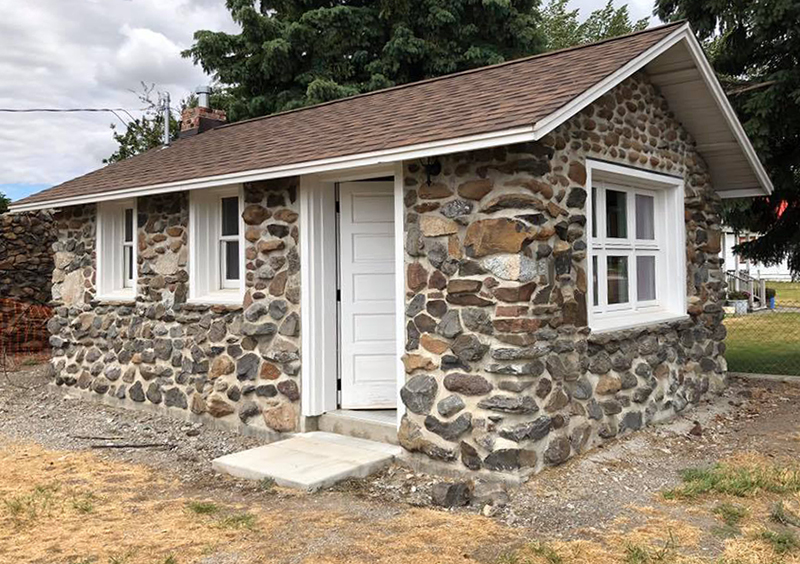Leonard Round Barn
Status: Saved!
Year Listed: 1992
Location: Pullman, Whitman County
Early in 1992, the Trust began offering assistance toward saving the T.A. Leonard barn built near Pullman in 1917. Barn preservation was a growing concern statewide, and this was one of Washington’s few remaining round barns – and a unique design within that small typology. With their self-supporting roofs, smaller amount of wall space, and circular feeding and cleaning methods, round barns were briefly believed to be more efficient and modern, and less expensive to build. The Leonard Barn, documented by the Historic American Buildings Survey in 1985 (photos and drawings), is unusual for its exceptionally high roof, wooden rather than concrete base, and large number of windows.
Placement on the Trust’s Most Endangered list in 1992 brought additional local as well as statewide attention to the Leonard barn. The owner wanted to re-roof it and make it more structurally secure but lacked funds. Board members Kit Garrett from Spokane and Don Heil from Pullman, along with executive director Becky Day, met with the owner to tour the barn and offer help publicizing its challenges. The next year, the Trust proudly granted $5000 won through the LU Cookie Company’s “Restore What’s Gone Before” campaign to re-create the missing cupola, the first step in sealing out the elements.
Still, it took many years to assemble funding for fully rehabilitating the barn, which remained on the Most Endangered list until 1996. The major renovation completed in 2001 included repairs to the beams, windows, and floors, shingle replacement, and fresh paint. The Leonard Barn is recognized in the Oxford World Vernacular Encyclopedia.

